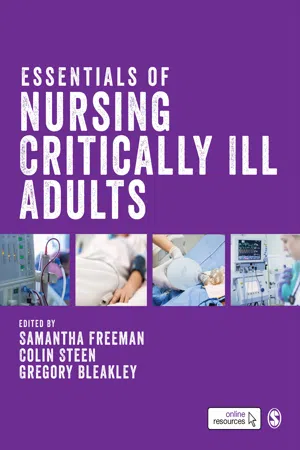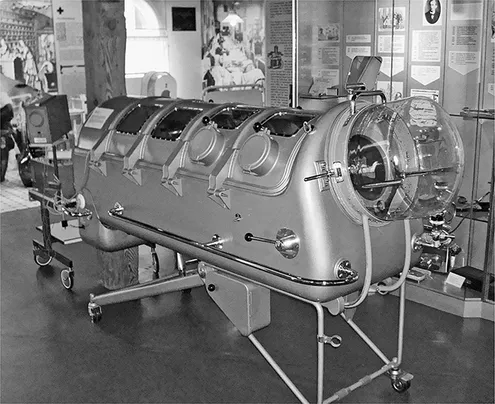
Essentials of Nursing Critically Ill Adults
- 408 pages
- English
- ePUB (mobile friendly)
- Available on iOS & Android
Essentials of Nursing Critically Ill Adults
About This Book
An essential guide to critical care nursing that includes all the key scientific knowledge and procedures you will need to know when entering the critical care environment. Written by a dedicated team of lecturers and practitioners with extensive experience in critical care nursing, this textbook covers all the key elements involved in nursing critically ill adults, with individual chapters on managing problems associated with different organ systems and the pathophysiology behind these disorders. It also features coverage of psychological care and infection prevention, and includes a consistent focus on the importance of a person centred, evidence-based approach to critical care delivery. To further support your learning, the book is full of activities that enhance your knowledge and test your understanding, including clinical case studies, critical thinking tasks, and reflective practice exercises. For lecturers and instructors, there is a collection of online resources including a testbank of multiple-choice questions, links to relevant videos for each chapter, and PowerPoint slides for each chapter. The ideal textbook for nursing students studying critical care, undertaking clinical placements in intensive care, or nurses new to the critical care environment.
Frequently asked questions
Information
1 The History and Development of Critical Care Nursing
Critical care nursing is an area of adult nursing with a focus on the care of a person experiencing critical illness. As a critical care nurse, you are the linchpin, coordinating the team and ensuring compassionate, person-centred care is provided for those most to seriously ill along with caring for their families, it is an amazingly rewarding place to nurse.Orla, Staff Nurse who has worked in critical care for 9 years
I was completely awestruck by the nurses on my first week of placement on the critical care department. I then researched all about critical care services and it’s fascinating to read about how critical care and care nursing has evolved over the years. I can’t wait to apply once I qualify!Hadi, 3rd Year Student Nurse
Learning outcomes
- The history and development of critical care
- Critical care environment
- The development of evidence-based practice and care bundles
- Working with the Critical Care team
- The importance of reflection and self care
Introduction
The history and development of critical care



Table of contents
- Cover
- Half Title
- Publisher Note
- Title Page
- Copyright Page
- Contents
- The Sage Essentials of Nursing Collection
- About the Authors
- About the Contributors
- Acknowledgements
- Introduction
- Note to lecturers: Access to additional teaching resources
- 1 The History and Development of Critical Care Nursing
- 2 Humanising Critical Care
- 3 The Critical Care Continuum
- 4 Infection Prevention and Control in the Adult Critical Care Unit
- 5 Critical Care Related to the Respiratory System
- 6 Critical Care Related to the Cardiac System
- 7 Critical Care Related to Systemic Inflammatory Response
- 8 Critical Care Related to the Pathophysiology and Management of Renal and Liver Disorders
- 9 The Complex Patient: Scenario 1
- 10 Critical Care Related to the Gastrointestinal System
- 11 Critical Care Related to Neurology, Physiology and Disorders
- 12 Critical Care Related to the Skin and Integumentary System
- 13 The Complex Patient: Scenario 2
- 14 Critical Care Related to Women During Pregnancy band Childbirth
- 15 The Psychological Care of the Critically Ill
- 16 Supporting Those at the End of Life in Critical Care
- 17 Rehabilitation After Critical Illness
- Appendix
- Glossary
- Index